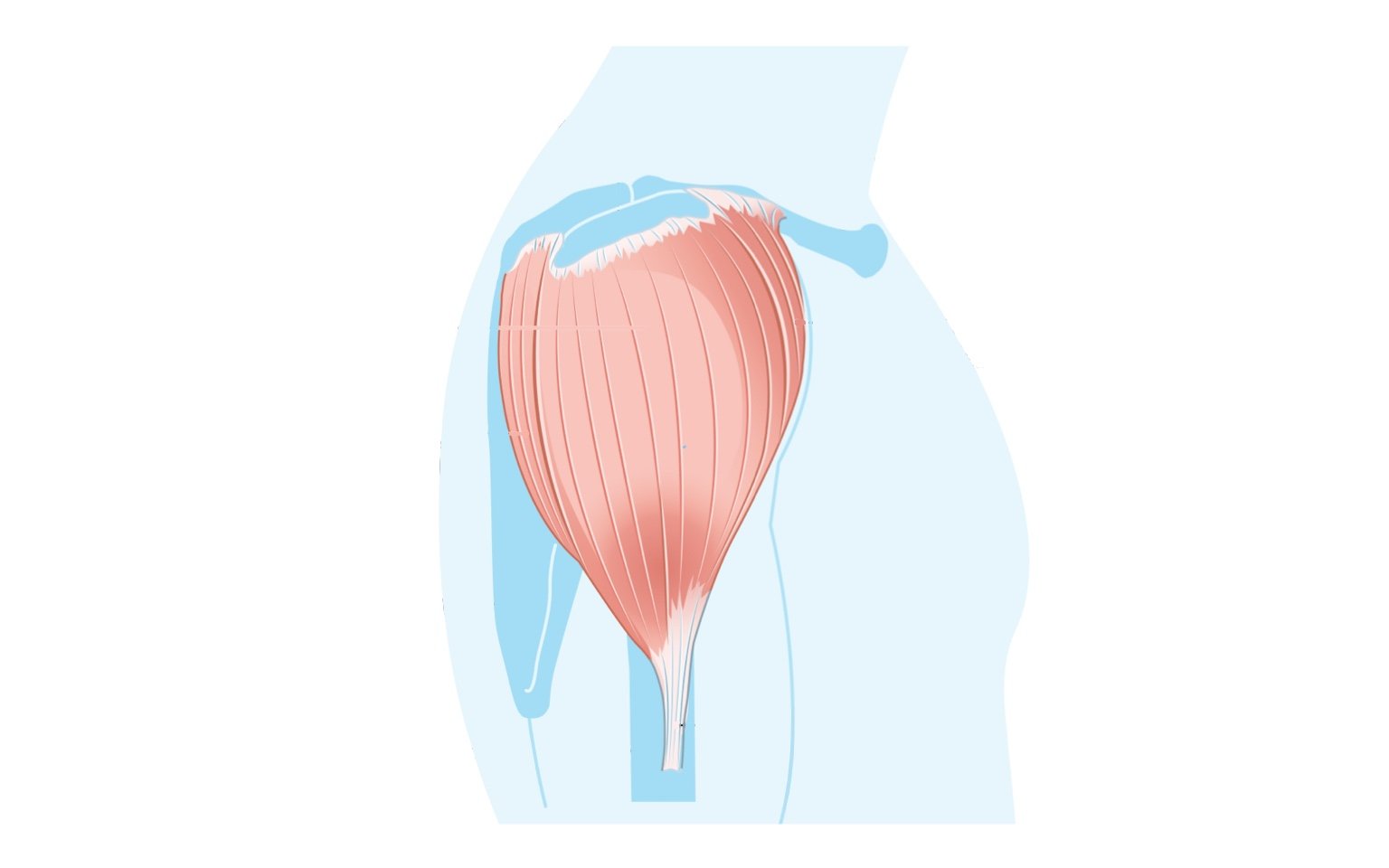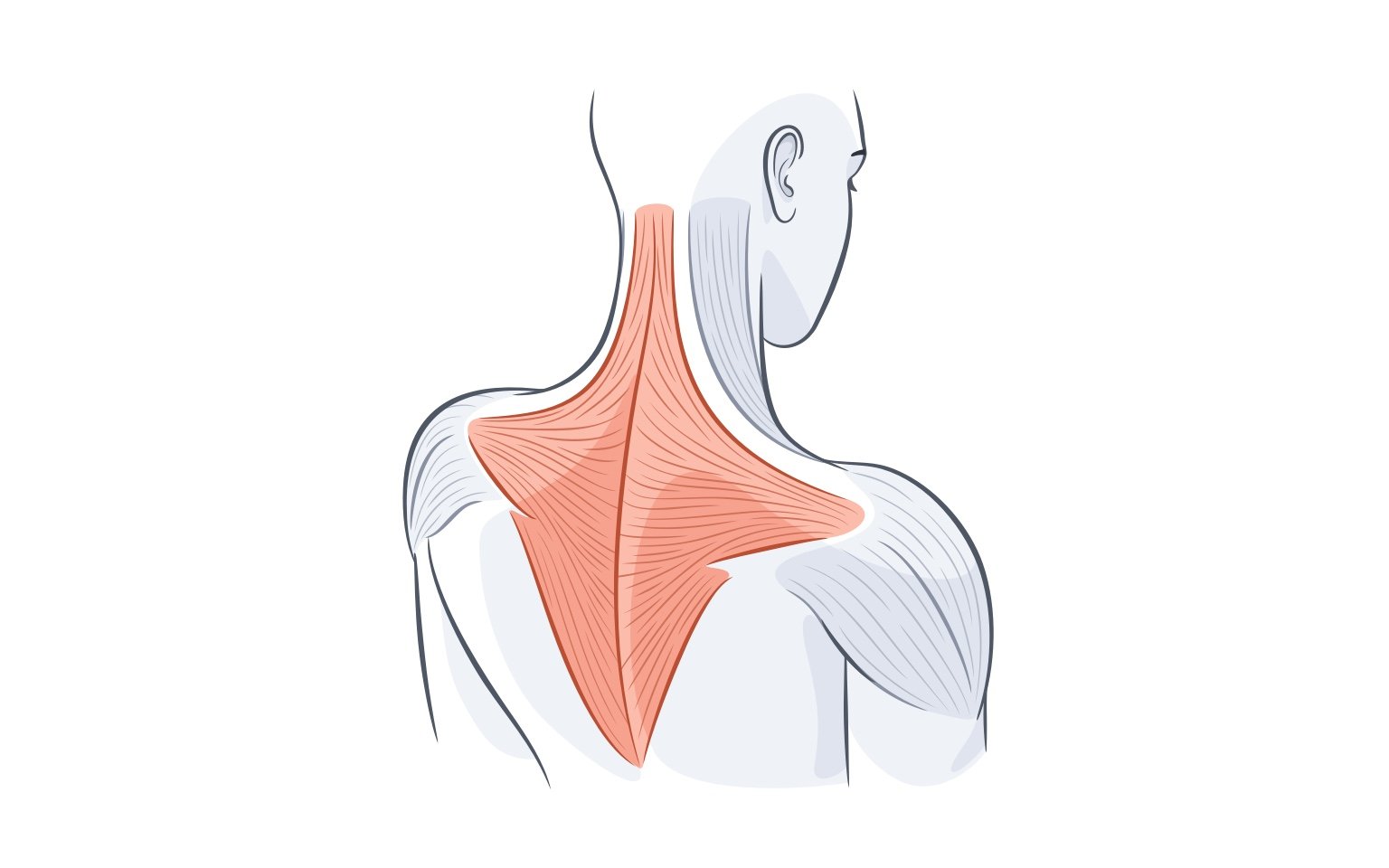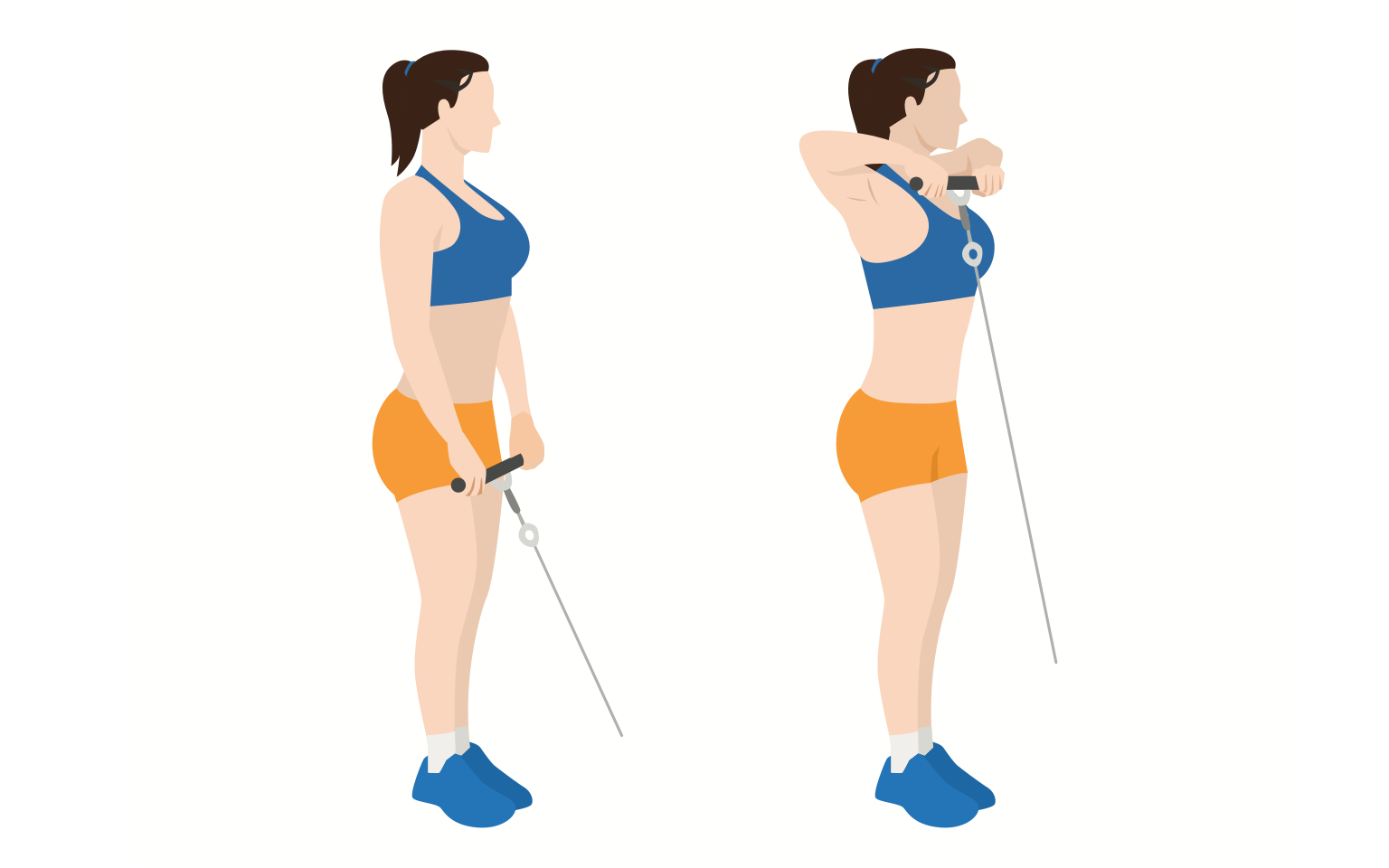
The upright row is an advanced exercise that targets your shoulders and upper back muscles. The movement improves both strength and coordination and proper form is critical for this exercise. Beginners should master other basic and safer shoulder and back exercises before attempting upright rows.
The upright row works your deltoids, traps and the biceps, to some extent. It also engages your lower back, core and forearms. Your lateral (side) deltoids, anterior (front) deltoids and traps are all muscles responsible for stabilization of the shoulder joint, shoulder movement and good posture.
Doing this exercise can create a defined, balanced look in your shoulders and upper back.
To perform upright rows, all you need is a barbell. This is the traditional barbell upright row. It provides a even distribution of weight and a comfortable grip. Variations of the exercise use dumbbells or kettlebells.
Some people incorporate upright rows into their upper body or shoulder day routine. It is important to say, though, that upright rows can be a dangerous exercise so in general we recommend choosing a safer alternative. If you do use upright rows, it’s important that you conduct the exercise as safely as possible.
What muscles does the upright row work?
Upright rows primarily work target your lateral deltoid muscles. The lateral deltoids, also known as middle deltoids or side deltoids, are your outermost shoulder muscles, responsible for raising your arms to the side. Increasing the size and strength of these muscles can enhance your upper body appearance, and also help in everyday lifting and pulling activities.

The upright row also works the trapezius muscles (traps). The traps are large triangular muscles that run along your upper and middle back. They are important muscles for shoulder movement and stability, and for maintaining good posture.

Your front deltoids are also worked as a secondary muscle, assisting in the movement and providing stability during the exercise.
Benefits of upright rows
The main benefit of upright rows is the development of your shoulder muscles. The upright row targets key shoulder muscles, including your deltoids, trapezius (traps) and rhomboids. Regularly working these muscles in a workout routine stimulates the muscles and encourages their growth and development. This can result is a more defined shoulder appearance, so it is a great exercise if you are aiming for strong and more sculpted shoulders.
The deltoids (particularly your lateral and posterior delts) and traps muscles help create a rounded appearance in your shoulders. With consistent training of these muscles, you can create fuller and rounder shoulders.
Upright rows also strengthen the traps and rhomboids, which is crucial for shoulder movement and stability. This can also improve your upper body appearance and strength.
To a lesser extent, upright rows engage your bicep muscles. Over time, this can contribute to bigger and stronger biceps, although if you main goal is bigger biceps, you should look to include exercises like bicep curls into your routine.
How to do an upright row

- Stand tall, with your feet shoulder-width apart. This posture is important to maintain good balance throughout the exercise.
- Grab the barbell, with your hands positioned slightly narrower than shoulder-width apart. Use an overhand grip with your palms facing towards your body.
- Paying attention to your form, inhale deeply and engage your abdominals. Ensure you have a straight back throughout the movement and keep your chest lifted. Keep your eyes directly forward to maintain a neutral neck position. This minimizes the risk of injury.
- As you exhale, pull the barbell upwards toward your chin, keeping the bar close to your body. Use your elbows to drive the motion, keeping them always higher than your forearms.
- Bring the barbell slightly below chin level (i.e. to approximately shoulder height).
- At the peak of the motion, squeeze your shoulder blades together, engaging your traps and deltoid muscles. Pause for 1-2 seconds at the top of the motion, to maximize engagement of the muscles.
- Exhale as you lower the barbell to waist level in a slow, controlled motion.
- Repeat for the desired number of reps.
Sets and reps
If you use upright rows in a workout routine, it should be as a finishing move for your shoulders. Perform upright rows after traditional shoulder exercises like shoulder press, lateral raises or front raises. Performing these other shoulder moves first will effectively warm up the targeted areas of your shoulders.
Aim for 3 sets of 10-15 reps with a weight that allows you to maintain a proper form throughout the exercise. For strength-focused routines, you might aim for 3 sets of 4-8 reps, with a slightly higher (but not excessive) weight.
It’s important to remember that you should not use upright rows as a primary strength-building exercise for your shoulders. Upright rows come with a high risk of injury as improper form can put stress on your shoulder joints, leading to injury. Ensure proper form and consult a fitness professional for guidance.
Common mistakes
A common mistake is gripping the bar too wide. Your grip should be slightly narrower than shoulder width. This will prevent unnecessary strain on your shoulders and elbows, because a wide grip will engage other muscles more than necessary.
If you encounter any pain during the exercise, it may indicate that you have the wrong form or the weight is too heavy. If you have a pre-existing injury or shoulder condition, consult a medical professional or physical therapist. They can provide professional guidance on modifications to the upright row exercise, or suggest alternatives.
Variations
Cable upright row
The cable upright row uses a cable machine. Simply stand in front of the machine, with your feet shoulder-width apart and knees slightly bent. Grab the handle with an overhand grip with your arms straight down. Pull the handle up towards your chin, with your elbows out to the side. Then lower than handle back down. Repeat for the desired number of reps.

The cable machine provides a smooth and consistent resistance throughout the movement. Providing continuous tension on muscles throughout the range of muscles is ideal for exercises like upright rows, since it makes the exercise more effective and reduces the risk of injury.
It is also simple to adjust the weight on a cable machine. Weight stacks can be easily adjusted by moving the pin into the desired weight. Some machines have incremental controls for more precise adjustments.
Dumbbell upright row
If you don’t have a barbell, you can also use dumbbells to perform this exercise. Stand with your feet shoulder-width apart, with one dumbbell in each hand. Lift the dumbbells up towards your chin, keeping the weights close to your body.
Your hand position should be the same as barbell upright rows, i.e. just slightly less than shoulder-width apart. Maintain this position throughout the movement, with your wrists straight and elbows pointed outwards and higher than your wrists and forearms.
If you are new to upright rows, we recommend starting with barbell rows for better control and stability, until you establish the proper form and technique.
Injury risk
Upright rows can lead to shoulder injuries due to the high degree of internal rotation of the shoulder. This is especially true with heavier weights, since there is more stress placed on your shoulders and rotator cuff muscles.
The “Avoiding Shoulder Injury From Resistance Training” article in the Strength and Conditioning Journal cautions against the use of upright rows: “During this exercise the arm is maintained in an internally rotated position throughout the full range of elevation. We recommend either avoiding this exercise entirely or limiting elevation to 80º and keeping the elbows lower than the shoulders to avoid rotator cuff impingement.”
Having the proper form is necessary to avoid strain and injury risk.
Alternatives
We recommend alternative exercises that target similar muscles.
The dumbbell lateral raise is a good exercise that targets your lateral deltoids and improves shoulder stability. Stand with your feet shoulder-width apart, with a dumbbell in each hand. Raise the weights to the side until they reach shoulder height. Pause, and lower the weights back down in a controlled motion.
Dumbbell lateral raises are less likely to cause injury or discomfort in your shoulders, since it uses a more natural movement. This reduces the strain on your shoulder joint.
Other compound exercises are also highly effective in building mass and strengthening your shoulder muscles. Bench press targets your chest, shoulders and triceps.
References
Durall, C. J., Manske, R. C., & Davies, G. J. (2001). Avoiding shoulder injury from resistance training. Strength & Conditioning Journal, 23(5), 10.
